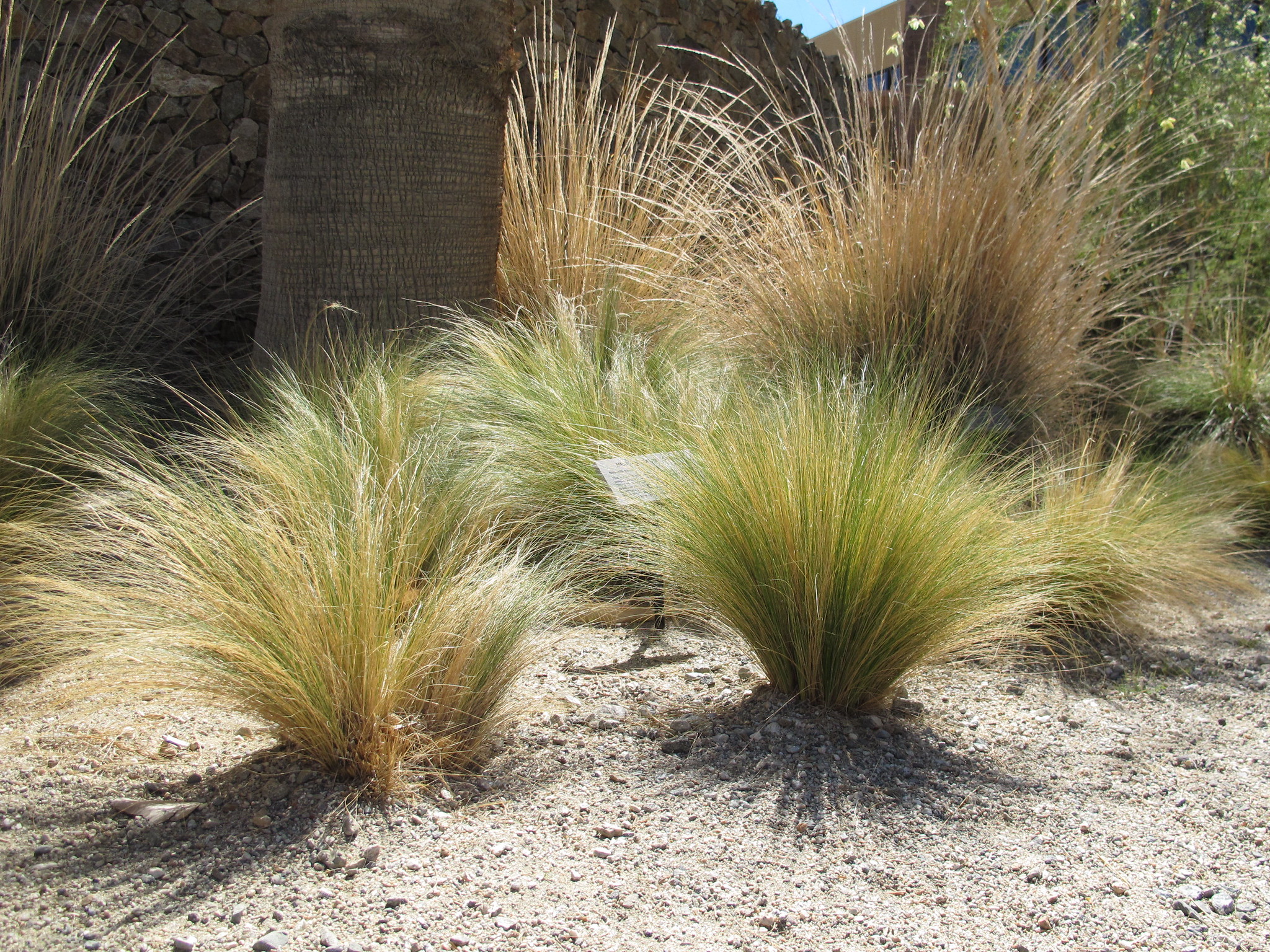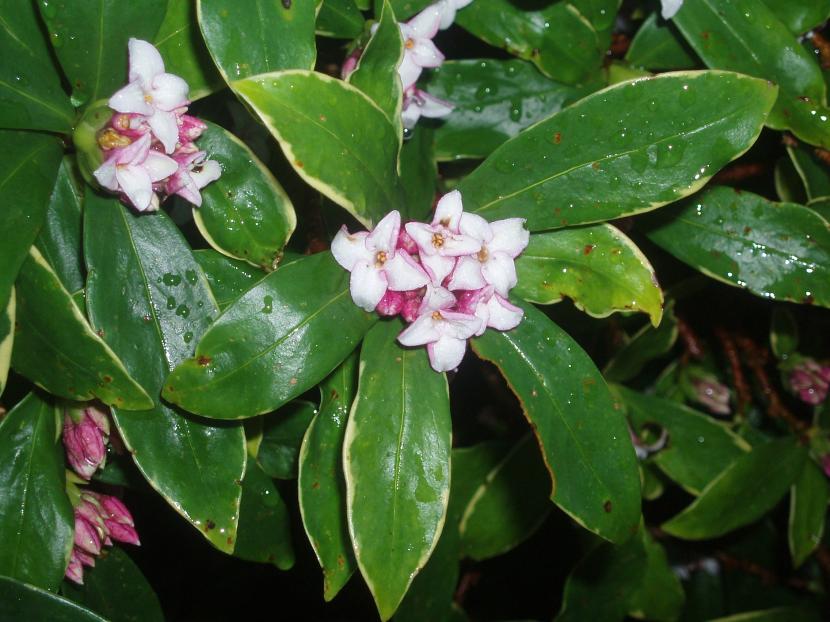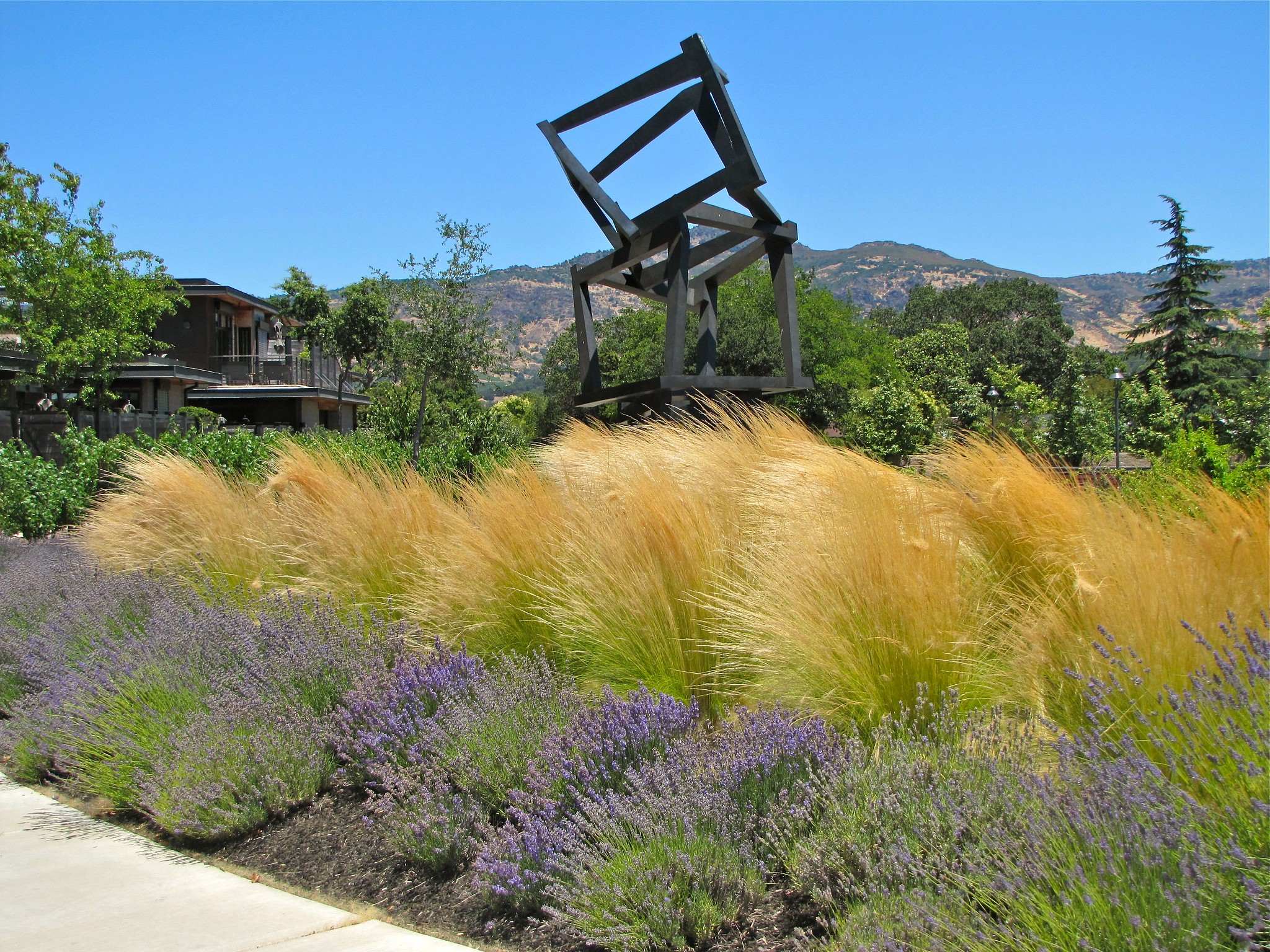
Image - Flickr / Megan Hansen
When you have a xero-garden you don't always know what to put to make it really nice. However, there is one with which we will not have any problem: the stipa tenuissima, better known as feather grass.
This beautiful grass grows to a height of seventy centimeters, so it looks great defining the different areas of the garden. And the best thing is that almost no maintenance required .
What are the characteristics of the stipa tenuissima?

Image - Flickr / Plant Right
This is a herbaceous plant with a perennial cycle, that is, it lives for several years, originally from South America, found mainly in Mexico. The scientific name is Nassella tenuissima, although the previous one is accepted (stipa tenuissima) as a synonym. Its leaves are very thin and long, up to 70cm long, green in color. They are so fine, that our protagonist has a feathery appearance. The flowers are grouped in spike-shaped inflorescences.
Like all grasses, has a very fast growth rate, so even if you are in a hurry to have your green paradise finished, you can buy a young specimen because it is certain that you will not have to wait more than a year to see it in a good size.
What care do you need?
If you dare to get one or more copies, then we tell you how you should take care:
Location
It is a plant that It must be outside, in full sunas otherwise it will not develop as it should. In addition, due to the size it reaches, if you are going to have it in the garden it is important that you plant it at a distance of at least 50 centimeters from other plants.
Earth
- Garden: not demanding. Of course, if you are going to put it near the lawn it is very important that the soil has good drainage to prevent its roots from rotting.
- Flower pot: it is an interesting species to have in containers -always with drainage holes-. Fill them with universal substrate mixed with 30% perlite.
Irrigation

Image - Flickr / manuel mv
The frequency of irrigation must be moderate; In other words, it is not necessary to water every day, but it is not advisable to let the soil or substrate dry completely. For this reason, if the climate is hot and dry, it may be necessary to water about 3 times a week in summer, and somewhat less the rest of the year; On the other hand, if it is cool and humid, 1 or 2 waterings per week will be enough, less if it is winter.
Anyway, if in doubt, do not hesitate to check the humidity of the soil or substrate, as excess water is harmful to the roots, which would end up rotting. If you grow it in a pot, during the summers you can put a plate under it, but only if the weather is very hot and / or it rains little.
The best water to irrigate is rainwater, but if you don't get it, tap water will work if it is suitable for human consumption, or one that does not have too much lime (with a pH of 6-7).
Planting or transplanting time
Garden
La stipa tenuissima is a plant that can be planted in the garden in spring. To do this, you have to make a planting hole of at least 50 x 50cm, fill it more or less halfway with universal substrate mixed with 30% perlite, and finally plant it ensuring that it is neither too high nor too low.
It is important to avoid manipulating the roots too much, so for it to come out more easily from the pot it is advisable to water it the day before.
Flower pot
The pot change it will also be done in spring, when you see that roots are coming out of the drainage holes, and / or more than two years have passed since it is in it.

Pruning
You don't really need it, but if, for example, a very cold winter has passed and its leaves have suffered a little (or a lot), you can cut it almost flush. In spring it would sprout again with force.
Use sanitized pruning tools, and don't forget to clean them well after use. In this way, if you were to use them again to prune other plants, you would not put them at risk.
Subscriber
It is not essential, but it is advisable if the soil is very poor in nutrients or if it is grown in a pot. In these cases, a monthly contribution of compost will make it grow well.
You can also use fertilizers, such as the universal one for plants, but it is important that you follow the instructions specified on the package to avoid causing an overdose.
Plagues and diseases
These plants they are very resistant and they have no problems 🙂. However, if it is watered in excess and / or if it is had in lands with bad drainage, its root system will suffer damages.
Rusticity
Supports up to -15ºC, and high temperatures of 30-35ºC. Therefore, it is a plant that can live in a wide variety of climates.

Image - Flickr / Plant Right
Did you know the stipa tenuissima?